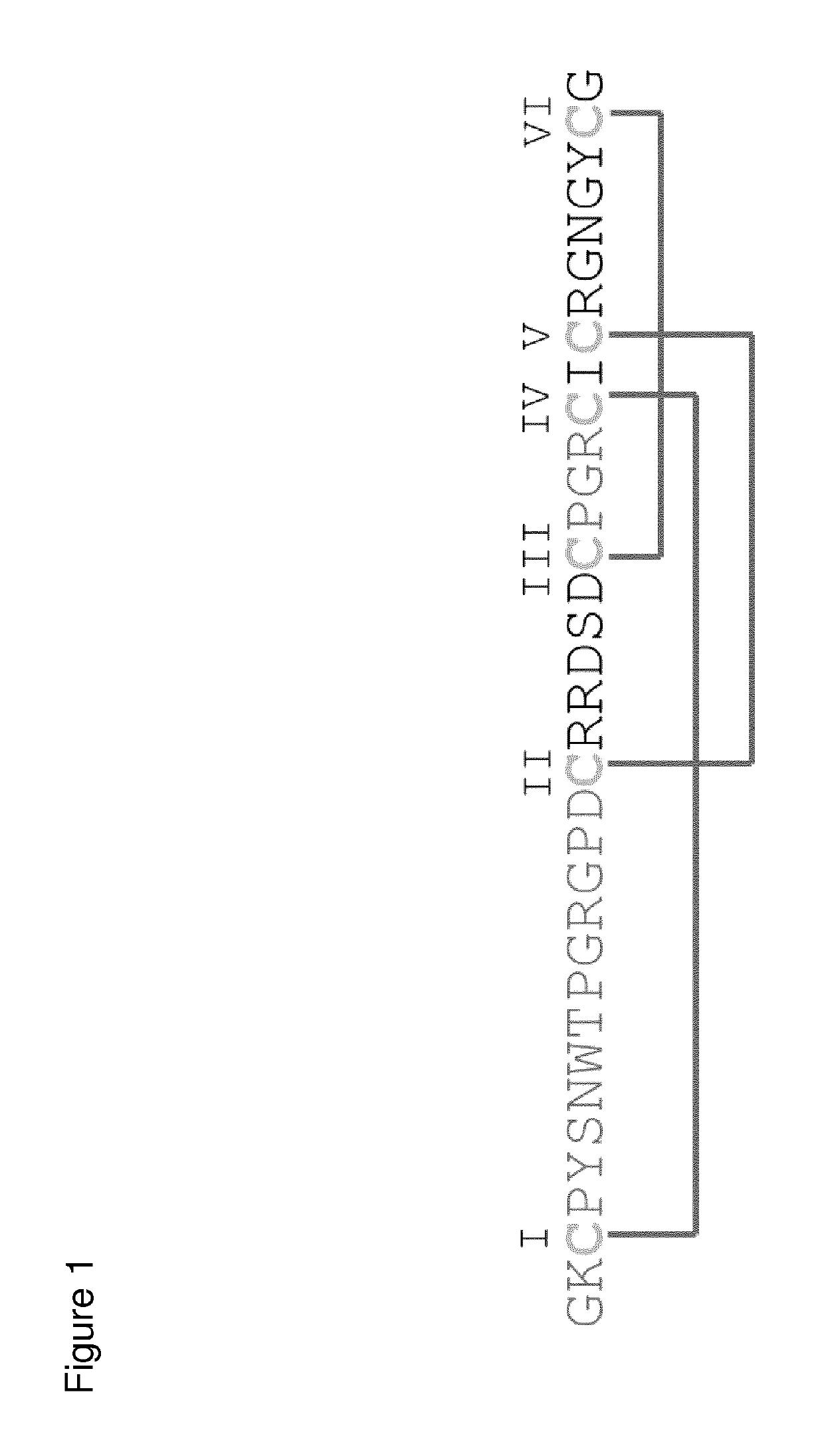Compositions and methods for diagnosis and treatment of cancer
a cancer and cancer technology, applied in the field of cancer diagnosis and treatment, can solve the problems of poor selectivity, radiotherapy, chemotherapy and conventional surgical procedures, severe toxic side effects on healthy tissue, etc., and achieve the effects of reducing the rate of tissue penetration, facilitating further functionalization, and facilitating the development of targeted drugs
- Summary
- Abstract
- Description
- Claims
- Application Information
AI Technical Summary
Benefits of technology
Problems solved by technology
Method used
Image
Examples
example 1
Materials and Methods
Plasmid Constructions
[0402]CHO codon optimized full length human Seprase (NCBI accession number NP_004451) was synthesized by Geneart and subcloned into pENTRcht vector (Invitrogen). The plasmid was verified by DNA sequencing and named pENTR-huSeprase. Afterwards, the respective insert was shuttled into a piggy Bac transposon vector (PB53x EF1 Series) by Gateway cloning (Invitrogen) to generate transposon expression plasmids. These plasmids contain an EF1 alpha promoter to drive expression of the cDNA, an IRES-EGFP cassette and hygromycin as a selection marker. The plasmid was used for the generation of a stable Seprase expressing cell line.
[0403]Utilizing pENTR-huSeprase plasmid DNA as a PCR template, a cDNA fragment encoding the Seprase extracellular domain (amino acids 29-760) was amplified with a forward primer (5′-GCGCAAGCTTGCTGCGGCCCTCCCGGGTGCAC-3′) and a reverse primer (5′-GCGCAGCGGCCGCGTCGGACAGGGAGAAGCACTGC-3′) The PCR product, excluding the coding seque...
example 2
Engineering of the Human FAPα Binding oMCoTi-II Mutant MC-FA-010
[0433]FAPα binding cytine knot miniprotein MC-FA-010 was isolated from a highly diverse phage based oMCoTi-II library (containing 1×1010 individual variants). Sequence analysis of an enriched clone after three selection rounds revealed a miniprotein sequence with 35 amino acid (aa) length (FIG. 1).
[0434]To analyze the structure function relationship of the identified miniprotein an alanine scan mutagenesis was performed (FIG. 2A+B). Concentration-dependent binding of MC-FA-010 variants to human Seprase was measured in a direct ELISA setup using recombinant target protein and EC50 values were calculated by means of a one-site-saturation binding model (Sigma plot 10). FIG. 2A shows a summary of all binding data. Binding of alanine mutants are shown as relative binding compared to parental sequence of MC-FA-010. Preserved / increased binding (respectively weak loss of binding) is shown in green colors, weak and moderate bind...
example 3
Target Binding of the Human FAPα Binding oMCoTi-II Mutant MC-FA-010 and Variants Thereof
MC-FA-010 Shows Affinity to Human Seprase in Nanomolar Range
[0436]Affinity of MC-FA-010 binding to recombinant human Seprase was measured using concentration-dependent ELISA. Plates were coated with the soluble fraction of human Seprase and MC-FA-010 was added as a fusion protein to thioredoxin (Trx-MC-FA-010) in a concentration range of 0.39 to 50 nM. Detection of bound miniprotein was achieved via anti S-Tag-HRP conjugated antibody (S-tag is provided by thioredoxin fusion expression system, FIG. 3A). EC50 values were calculated using the one-site-saturation binding model in Sigma plot 10. In addition binding of 3 nM Trx-MC-FA-010 was competed with soluble monovalent MC-FA-010 in a range of 0.64-3167 nM (FIG. 3B) showing a specific competition of the binding. Both, EC50 and IC50 value, show a binding affinity of MC-FA-010 to human Seprase in the nanomolar range.
[0437]Those experiments show a spe...
PUM
| Property | Measurement | Unit |
|---|---|---|
| dissociation constant | aaaaa | aaaaa |
| dissociation constant | aaaaa | aaaaa |
| dissociation constant | aaaaa | aaaaa |
Abstract
Description
Claims
Application Information
 Login to View More
Login to View More - R&D
- Intellectual Property
- Life Sciences
- Materials
- Tech Scout
- Unparalleled Data Quality
- Higher Quality Content
- 60% Fewer Hallucinations
Browse by: Latest US Patents, China's latest patents, Technical Efficacy Thesaurus, Application Domain, Technology Topic, Popular Technical Reports.
© 2025 PatSnap. All rights reserved.Legal|Privacy policy|Modern Slavery Act Transparency Statement|Sitemap|About US| Contact US: help@patsnap.com



